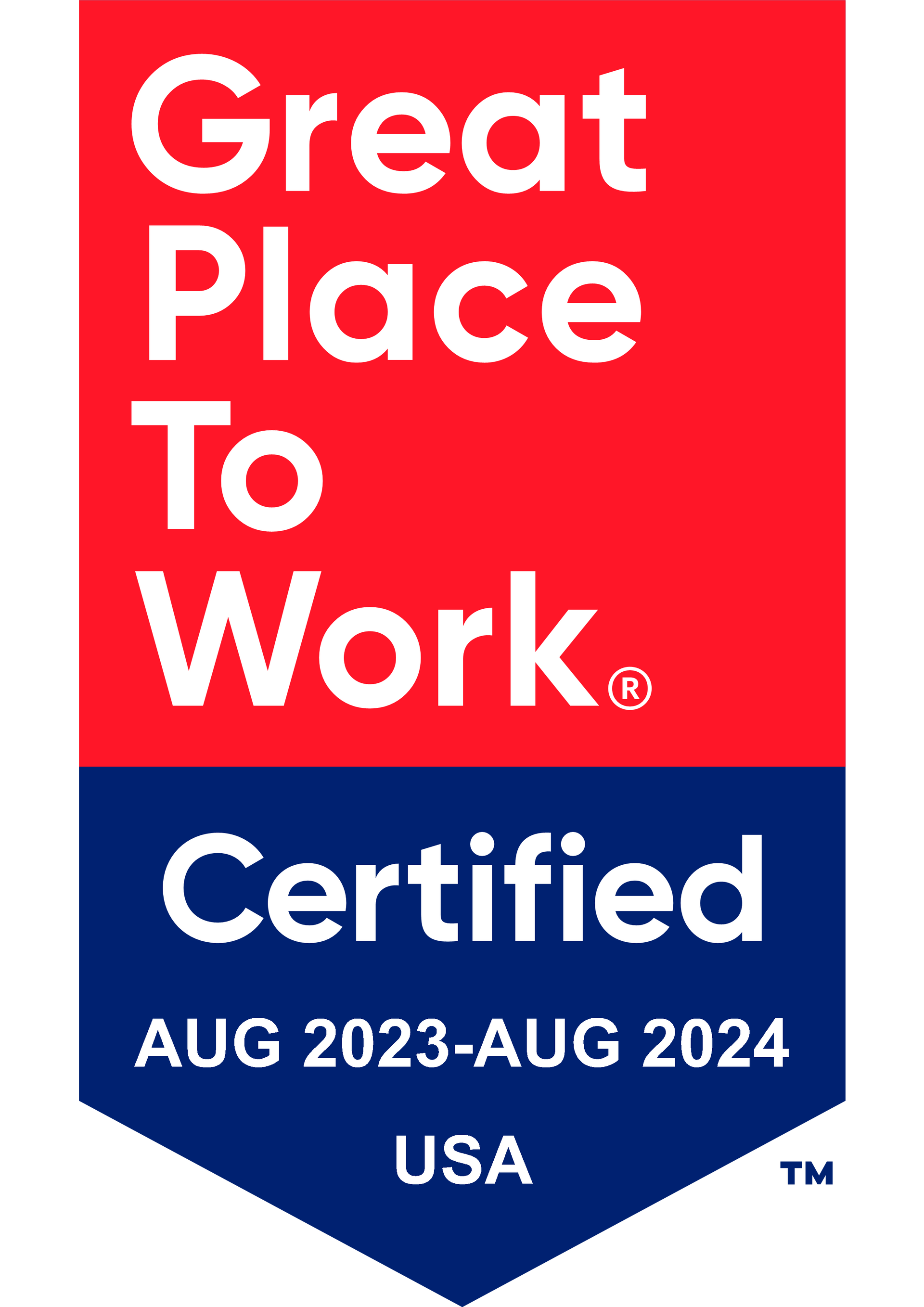Get in touch
408-366-8880
mymail@mailservice.com

401k Discrimination Testing: What Is It?
Offering retirement savings benefits as part of a company’s employer value proposition is essential to attracting, hiring, and retaining top talent. To help employees plan for their financial future, the most common retirement savings plan that employers offer for today’s workforce is a 401k defined contribution plan. A 401k plan allows employees to contribute pre-tax dollars to tax-deferred investments based on IRS annual contribution limits. Many employers offer a company match to employee contributions, with standard practices being a 50-cents-for-every-dollar match or a dollar-for-dollar match up to 6% of the employee’s contribution.
ERISA (Employee Retirement Income Security Act) is a law that “protects the interests of employee benefit plan participants and their beneficiaries,” and as such, covers welfare benefit and retirement plans. The IRS is the enforcement provision of the government for 401k retirement savings plans.
To ensure that employers offer 401k plans that allow eligible employees to participate equally, regardless of income, the IRS has put safeguards in place. These safeguards require employers to pass 401k discrimination tests, also referred to as 401k nondiscrimination tests, which show that their plans do not favor highly compensated and key employees over non-highly compensated employees. In other words, plans cannot discriminate against non-highly compensated employees.
If an organization fails any of the required series of annual discrimination tests, then it is the responsibility of the organization to remedy the issue as quickly as possible. Failing discrimination tests can mean potential excise tax and additional plan administrative tasks that the organization will have to take on. Failing discrimination tests could also lead to contribution refunds with a negative tax consequence for some employees and required additional contributions for others. All of these consequences can be costly to both an organization’s finances and the morale of its employees.
WHY IS 401K DISCRIMINATION TESTING IMPORTANT FOR YOUR BUSINESS?
All organizations should comply with the law and avoid the consequences of ignoring 401k discrimination testing. If your business is cutting it close when attempting to pass some of the tests, take the necessary steps to remedy the issue and ensure the passing of future tests.
Timely nondiscrimination reporting is also vital to avoid IRS penalties for missed deadlines. Missing reporting deadlines could lead to missed tax deductions and plan disqualification, as well.
Discrimination testing also shows an organization how well it’s doing at 401k plan participation. Based on the results, employers can make choices to support their workforce. For example, if plan participation is lower than you’d like it to be, you could look at options to educate employees further about the importance of contributing to a 401k and how compound interest works. You could also issue a survey to better understand your employees’ behaviors as they relate to planning participation. Other options employers might consider to encourage and increase plan participation include:
- Incorporating automatic enrollment
- Eliminating participation waiting periods for new hires
- Eliminating or shortening vesting periods
- Working with your benefits broker or plan administrator to develop custom solutions
WHAT ARE SOME OF THE CHALLENGES BUSINESSES FACE WITH 401K DISCRIMINATION TESTING?
Discrimination testing can be cumbersome and challenging, especially for small businesses with few employees. Small businesses often have a high number of highly compensated employees, and family-owned businesses often have a high number of key employees due to company ownership and the attribution rule for familial relations. Both scenarios make it more challenging to pass the required 401k discrimination testing.
Further, small businesses have limited resources to support financial coaching and advising that encourages non-highly compensated employees to actively contribute to and take advantage of their 401k. There are several reasons to encourage plan participation, including the fact that when more non-highly compensated employees contribute, it helps balance out the numbers to pass 401k discrimination tests.
The remaining contents below address numerous considerations for 401k discrimination testing, including:
- Employee classification determination
- Types of discrimination tests
- Testing frequency
- Steps to take if you fail a discrimination test
- Working with a 401k discrimination testing vendor
DISCRIMINATION TESTING EMPLOYEE CLASSIFICATIONS
Depending on the test administered, discrimination testing compares the percentage of non-highly compensated employees (NHCEs) to key employees or highly compensated employees (HCEs). To qualify for a specific category during the plan year, employees must meet certain criteria set by the IRS.
HIGHLY COMPENSATED EMPLOYEE (HCE)
For 401k retirement plans, highly compensated employees (HCEs) are employees who meet one of the two following criteria set by the IRS:
- They make greater than $125,000 in 2019 or $130,000 in 2020, or are categorized as being in the top-paid group by the employer who sponsors their 401k.
- They own greater than 5% of the interest in the business sponsoring their 401k at any time during the current or preceding year, regardless of total compensation.
Employers can opt to categorize employees who rank in the top 20% of compensation as top-paid employees. These benefits organizations with a low percentage of employees in the NHCE group compared to the HCE group. Total compensation includes base pay, overtime, commissions, and salary deferrals that go towards 401k and cafeteria plans.
The 5% ownership rule is based on the value of company shares. It includes not only the employee’s shares, but also the ownership shares of an employee’s spouse, children, and grandchildren that work for the same company. If an employee’s shares equate to 3%, their grandchild’s equates to 1.5%, and their spouse’s equates to 0.5%, they would be categorized as an HCE, as the combined total would be 5%.
NON-HIGHLY COMPENSATED EMPLOYEE (NHCE)
If an employee is not classified as an HCE, they will fall into the non-highly compensated employee (NHCE) category. However, due to the partial year income calculation for the year of hire, new hires who would typically be classified as an HCE based on annual compensation might not be categorized as an HCE during their first year of employment. Therefore, a new hire with an annual salary of $125,000+ might be categorized as an NHCE for the year they were hired and, once they meet the required income threshold, fall into the HCE category for the following year’s 401k discrimination testing.
KEY EMPLOYEES
Both highly compensated and non-highly compensated employees can fall into the key employee category. A key employee is an employee that does any of the following at any time during the plan year with the determination date:
- Owns greater than 5% of the business or has a spouse, parent, child, or grandchild that owns more than 5% of the company
- Owns greater than 1% of the business and makes more than $150,000 in total compensation annually
- Is an officer that makes more than $180,000 in total compensation annually for 2019, or $185,000 for 2020
CATEGORIZATION BASED ON CURRENT VS. PRIOR YEAR COMPENSATION
It is important to note that, when conducting discrimination testing, employee classifications can be determined based on their prior year’s compensation if it is allowed within the plan document. This option helps to alleviate the difficulties that can arise due to retirement reporting and fluctuating employment factors. If this option is used, the average contributions rates for the prior calendar year will be used rather than the contribution rates for the current calendar year.
TYPES OF 401K DISCRIMINATION TESTS
The three primary 401k discrimination tests that employers need to pass are the actual deferral percentage test, actual contribution percentage test, and the top-heavy test. What each test looks at is outlined in brief below.
Additional discrimination tests include the general nondiscrimination test, elective deferral limit test, minimum coverage test, and annual addition limit test. For support in accurately selecting tests and calculating the test results, it’s beneficial to work with a benefits vendor who is well versed in nondiscrimination testing.
ACTUAL DEFERRAL PERCENTAGE (ADP)
The ADP test assesses your average HCE salary deferral percentages compared to your average NHCE salary deferral percentages to ensure that both fall within an acceptable range and that your employee salary deferrals do not disproportionally discriminate against NHCEs.
ACTUAL CONTRIBUTION PERCENTAGE (ACP)
The ACP test is similar to the ADP test. The difference is that the ACP calculations for HCE and NHCE employees also include after-tax contributions employees make and any employer match contributions provided. The ACP ensure that employer matching and voluntary contributions do not disproportionally discriminate against NHCEs.
TOP-HEAVY TEST
The top-heavy test is relatively straightforward and ensures that key employee accounts don’t represent an unreasonable proportion of plan assets. If the total amount of key employee 401k account balances is more than 60% of the total 401k account plan balance, the plan is considered top-heavy.
SAFE HARBOR 401K PLAN EXEMPTION
Safe Harbor 401k plans incorporate a default employer contribution amount. These plans are exempt from the three 401k discrimination tests outlined above if the employer adheres to one of the following three guidelines:
- Matches 100% of employee 401k contributions up to 4%, not to exceed 6%
- Matches 100% of employee 401k contributions up to 3% and 50% of the next 2%
- Contributes 3% of every employees’ compensation regardless of employees’ participation in or contribution to the plan
401K DISCRIMINATION TESTING FREQUENCY
Generally, to have all of the data readily available, discrimination testing is done on the last day of a plan year or the first day of the next plan year. Conducting a test at the midway point is recommended, as well as random testing to avoid any unfortunate surprises.
There are important IRS deadlines for organizations to consider as well. If an organization fails the ADP or ACP test, they have two and a half months to correct the issue and pass the test to avoid a 10% excise tax. The final deadline is 12 months after the close of the plan year. If the top-heavy test fails, the organization has 12 months after the closing of the plan year to correct the issue and pass the test. Further, outside of these deadlines, your plan documents will provide details for a statutory correction period. During that time, you must take the required steps for your 401k plan to pass discrimination testing.
It’s ideal to assess 401k plan participation throughout the year. Doing so provides insight into what problem areas are already surfacing or will potentially surface, which allows you to be proactive — not reactive — in your approach to remedying potential issues. Being proactive can save you from making costly mistakes and dealing with disgruntled employees down the road.
STEPS TO TAKE IF YOU FAIL 401K DISCRIMINATION TESTING
If you fail to pass one of the required 401k discrimination tests, work with a knowledgeable benefits broker or retirement plan advisor to determine the best plan of action to address the issues. Below are some next steps to consider.
CHOOSE A DIFFERENT TEST
When an employer fails one of the discrimination tests, one option is to determine if another test might help the plan pass. As mentioned previously, there are additional discrimination tests available in addition to the standard three, so a well-versed broker or advisor can guide what test might help you pass the IRS requirements.
TAKE ACTION TO CORRECT ISSUES
When your plan fails one of the required discrimination tests, corrective action must be taken within the time frame set by the IRS. Corrective actions that might be necessary include making corrective distributions, making qualified matching contributions, or making qualified non-elective contributions.
EDUCATE EMPLOYEES
As we mentioned earlier, educating and encouraging employees to participate in your 401k plan is one way to fix issues around failing discrimination testing. The more NHCEs that participate, the more it balances out with the percentage of participation of HCEs. When employees participate in a 401k plan, they are also helping alleviate financial stress, plan for their future, and accept free money when contributing to receive the full employer match, if available.
SEEK SUPPORT FROM 401K DISCRIMINATION TESTING EXPERTS AT KBI BENEFITS
As you can see, 401k discrimination testing is a complicated and time-consuming process. At the same time, testing is a necessity for businesses to remain in compliance, see where problem areas within their plans lie, avoid penalties, and avoid running the risk of losing a qualified plan.
KBI Benefits' services include 401k discrimination testing, so you can rest assured that your discrimination testing will be completed to meet the required deadlines. We will also work with you to identify potential concerns and possible solutions. And in the unfortunate event of failing a discrimination test, you will not be alone through the process. You’ll have the support you need to take corrective measures to bring your plan back into compliance.
Services
Latest Thinking




